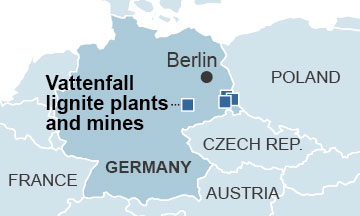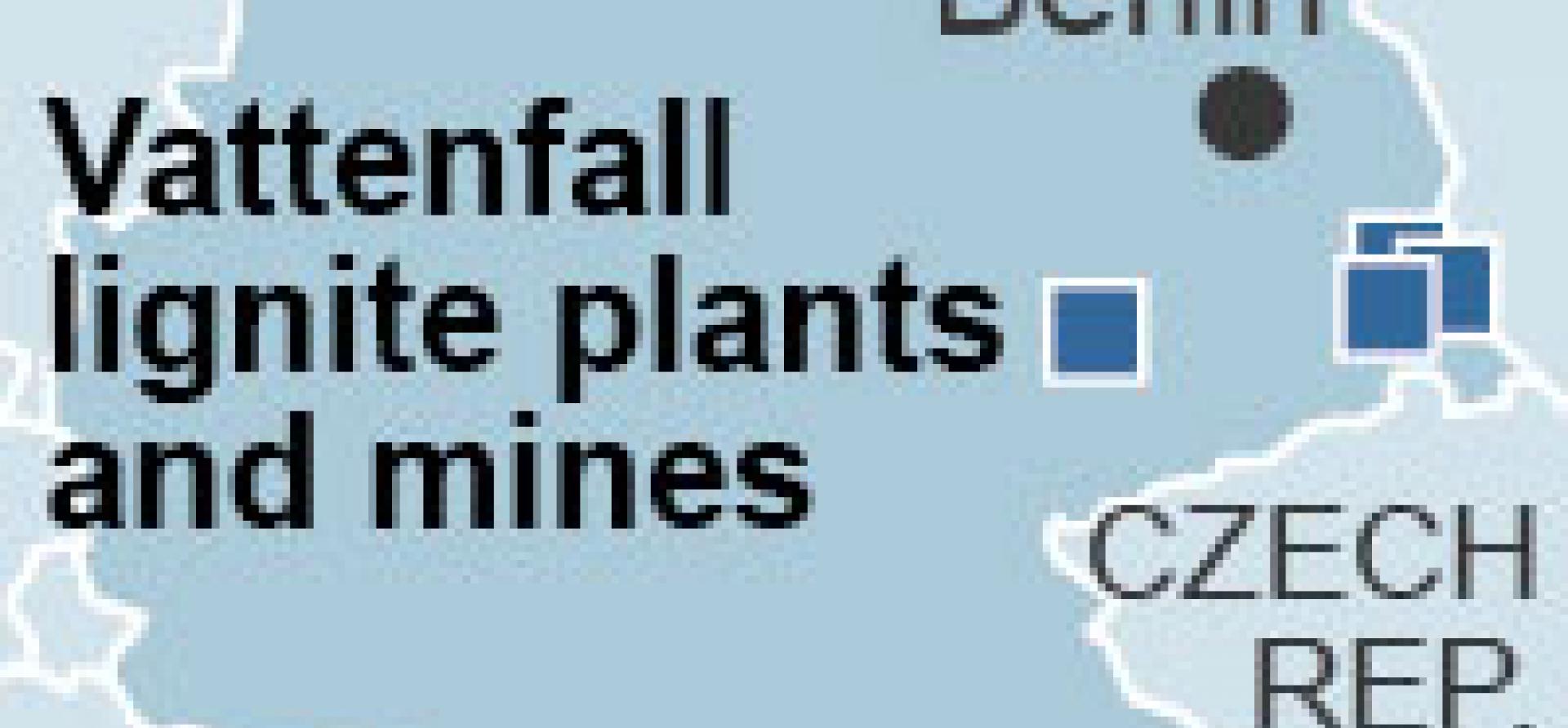 As the Swedish electric utility Vattenfall prepares to off-load its German lignite business to Czech investors, its second-quarter results on Thursday showed how the company—and lignite in particular—is suffering from lower Central European power prices.
As the Swedish electric utility Vattenfall prepares to off-load its German lignite business to Czech investors, its second-quarter results on Thursday showed how the company—and lignite in particular—is suffering from lower Central European power prices.
Vattenfall took the unusual step of breaking out separate results for its lignite business, ahead of its transfer of those assets (for a nominal fee) to a Czech-based partnership between energy company EPH and PPF Investments. The deal is expected to close next month.
The disclosure offered some insight into why Vattenfall is selling, and raises the question of why the Czech investors want the lignite holdings (lignite is a low-grade form of coal).
The main problem for Vattenfall is declining wholesale power prices in Central Europe, a trend driven by low coal prices and ongoing deployment of zero-marginal-cost renewable power. Vattenfall reported that German wholesale power prices in the second quarter of this year fell to 24.7 euros per megawatt hour (MWh), from 25.1 euros in the first quarter, down 13 percent, from 28.3 euros, year on year.
The most visible result of this change was a collapse in cash flow from operating activities (based on operating profit, excluding asset impairments), across the whole Vattenfall group in the first half of 2016, down 56 percent year on year to 7.2 billion Swedish Krona (SEK).
Here’s how the company’s lignite business performed over the first six months of this year:
- Sales were down 22 percent year on year, to 8.7 billion SEK.
- Maintenance requirements totaled 1.1 billion SEK, or about a fifth of the Vattenfall group total.
- Cash flow from lignite operations was negative, to the tune of 1.4 billion SEK.
The net result was that the lignite holdings Vattenfall is signing away sucked 2.5 billion SEK out of the company (in negative “free cash flow”), a harsh fact that helps explain why Vattenfall reported an overall 21.5 billion SEK second-quarter impairment on its lignite holdings compared with a 15.2 billion SEK hit in the same quarter last year.
And it explains why Vattenfall asserts that its latest impairment charge would have been even greater, at 35-40 billion SEK, had it planned to retain the asset.
“The lignite operations are having a tough financial time,” Vattenfall’s chief financial officer, Ingrid Bonde, said on Thursday. “That was the rationale for us divesting it.”
Numbers aside, Vattenfall has a public-relations problem with its lignite holdings—as I’ve written here previously—given the company’s desire to present itself as a good corporate citizen.
It’s conceivable that the lignite unit’s problems will only get worse, as the power plants age and as Germany looks to meet ever more ambitious targets to cut carbon emissions. German ministries last year proposed requiring older lignite power plants to buy more pollution permits per tonne of emissions than other fossil fuels under the European Union’s carbon market rules, a proposal the European Commission supports.
The Czech investors, however, clearly don’t see the same risk as Vattenfall. As privately held companies, EPH and PPF may never spell out their strategy in detail in public. But theirs is a subsidy play, part of an acquisition spree for regulated fossil-fuel assets supported by guaranteed payments. Last year, EPH acquired E.ON’s coal assets in Italy and has acquired similar holdings in the U.K.
As coal becomes increasingly stigmatized, utilities are scrambling for the exit, a trend EPH seems to think makes assets like Vattenfall’s German lignite mines and power plants cheap, given continued profits from regulated payments.
Gerard Wynn is an IEEFA energy analyst.
RELATED POSTS:
Europe: ‘Capacity Payments’ Provide a Lifeline to Costly Coal-Fired Generators
In Coal Giveaway to Czech Energy Group, a Public-Relations Problem for a Swedish Utility















